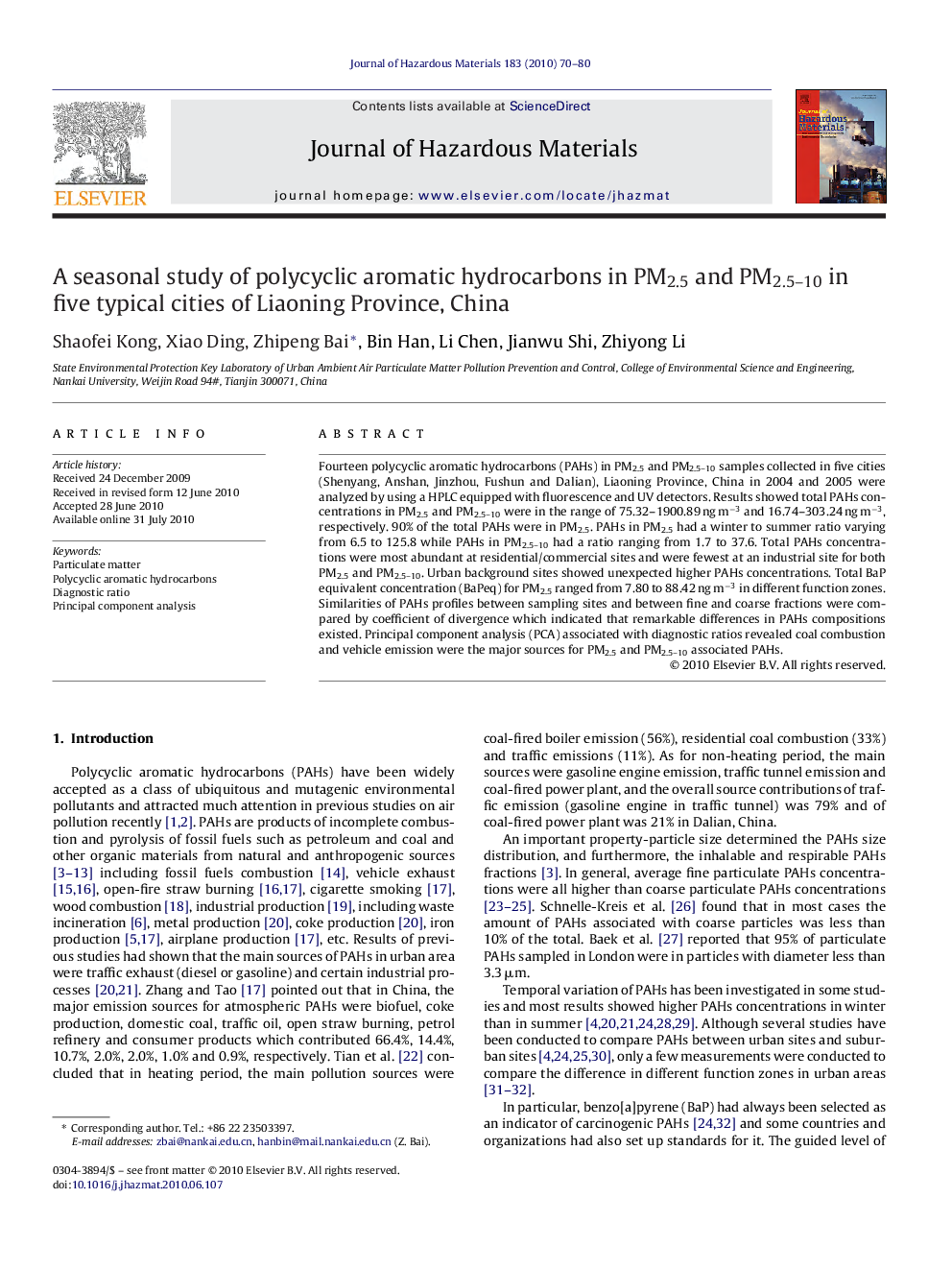| Article ID | Journal | Published Year | Pages | File Type |
|---|---|---|---|---|
| 579500 | Journal of Hazardous Materials | 2010 | 11 Pages |
Abstract
Fourteen polycyclic aromatic hydrocarbons (PAHs) in PM2.5 and PM2.5-10 samples collected in five cities (Shenyang, Anshan, Jinzhou, Fushun and Dalian), Liaoning Province, China in 2004 and 2005 were analyzed by using a HPLC equipped with fluorescence and UV detectors. Results showed total PAHs concentrations in PM2.5 and PM2.5-10 were in the range of 75.32-1900.89 ng mâ3 and 16.74-303.24 ng mâ3, respectively. 90% of the total PAHs were in PM2.5. PAHs in PM2.5 had a winter to summer ratio varying from 6.5 to 125.8 while PAHs in PM2.5-10 had a ratio ranging from 1.7 to 37.6. Total PAHs concentrations were most abundant at residential/commercial sites and were fewest at an industrial site for both PM2.5 and PM2.5-10. Urban background sites showed unexpected higher PAHs concentrations. Total BaP equivalent concentration (BaPeq) for PM2.5 ranged from 7.80 to 88.42 ng mâ3 in different function zones. Similarities of PAHs profiles between sampling sites and between fine and coarse fractions were compared by coefficient of divergence which indicated that remarkable differences in PAHs compositions existed. Principal component analysis (PCA) associated with diagnostic ratios revealed coal combustion and vehicle emission were the major sources for PM2.5 and PM2.5-10 associated PAHs.
Keywords
Related Topics
Physical Sciences and Engineering
Chemical Engineering
Chemical Health and Safety
Authors
Shaofei Kong, Xiao Ding, Zhipeng Bai, Bin Han, Li Chen, Jianwu Shi, Zhiyong Li,
